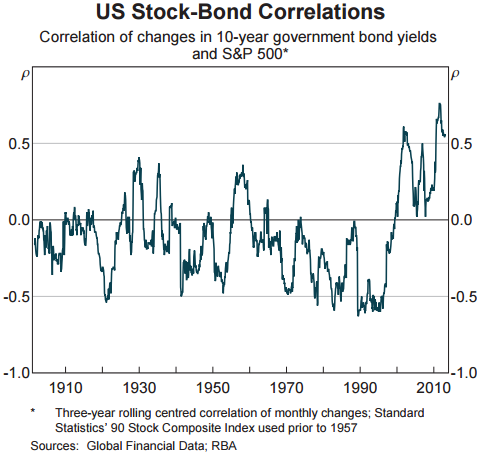The most important hard skill in any profession is a soft skill called Empathy.
Without empathy, any project or business goal is doomed to fail.
Just a small humorous illustration to get the picture....
Adding Rabbits
One day, the math teacher asks six year old Johnny, "If you have 200 rabbits and you add another 100 rabbits, how many rabbits would you have?"
Johnny thinks for a moment and then answers: "I think the answer is 337 Sir".
"No, Johnny. That's the wrong answer. Try again.
Johnny takes another five seconds and answers: "Still probably 337 Sir" "
Johnny takes another five seconds and answers: "Still probably 337 Sir" "
Now the math teacher slightly loses his temper and baffles: "No Johnny, wrong again. You know nothing about mathematics!".
Immediately Johnny answers: "And you know nothing about rabbits Sir"
Actuarial Skills
A recent (May 2015) Investopedia article sums up the five skills every actuary needs
- Analytical Problem Solving Skills
- Math and Numeracy Skills
- Computer Skills
- Knowledge of Business and Finance
- Communication and Interpersonal Skills
Although in a classical sense this powerful summary of an actuary's professional competences is perfectly in line wit more detailed descriptions as given by several actuarial associations, something essential is missing.
To be successful as an an actuary you'll need to develop what is called
Professional Empathy
What is Professional Empathy?
Professional empathy is the ability to see the world through the eyes of other professionals.
As actuaries we're trained to view and resolve our projects, challenges and issues in a primarily quantitative manner with the help of actuarial techniques, models and formulas.
Through study and experience we can develop "Professional Empathy" that allows us to look through the eyes of other professionals or clients and feel and understand what their view and perceptions are.
In doing so, we're able to optimize our advice, support or project performance.
Understanding and response
Professional empathy implies two elements: understanding and response.
Understanding
To understand other professionals and clients, we need to develop the ability to be sensitive to the needs and feelings of others. To do so, it helps to develop technical skills in other professional fields, read other than just actuarial literature and join other than pure actuarial conferences.
To understand other professionals and clients, we need to develop the ability to be sensitive to the needs and feelings of others. To do so, it helps to develop technical skills in other professional fields, read other than just actuarial literature and join other than pure actuarial conferences.
As graduated actuaries we already developed a broad multi-professional basis that includes professional areas as: mathematics, statistics, finance, insurance, asset management, pricing, administration, business analytics, ict, organization, marketing, etc. Therefore, if we continue to develop this multi-professional ability, we - as actuaries - are are ideally suited to organize combined professional expertise (innovation) projects.
Besides the traditional actuarial areas as insurance, pensions, statistics, and actuarial techniques we'll have to focus and develop skills in the surrounding areas of the actuarial work field:
Besides the traditional actuarial areas as insurance, pensions, statistics, and actuarial techniques we'll have to focus and develop skills in the surrounding areas of the actuarial work field:
In order to understand we need to develop the ability to read verbal, paralinguistic and non verbal cues of professionals in other professional fields.
Response
Secondly, our response and attitude to other professional should be in such a way that other professionals recognize that we understand them, appreciate that we speak their (professional) language and invite us to share their professional issues or doubts with us.
Secondly, our response and attitude to other professional should be in such a way that other professionals recognize that we understand them, appreciate that we speak their (professional) language and invite us to share their professional issues or doubts with us.
Interpersonal communication skills
This way of responding requires to bring out a professional attitude that's based on interpersonal communication skills like:
This way of responding requires to bring out a professional attitude that's based on interpersonal communication skills like:
- showing interest, respect and appreciation
- active listening
- showing understanding, being accessible,
- having a flexible attitude
- operate steady on basis of ethical principals.
It also forces us actuaries to continuously work on our intrapersonal skills like:
- Knowing what drives, angers, motivates, frustrates, inspires you
- Knowing your own strengths and limitations
- The ability to stay calm and balanced in stressful situations
- Self confidence
How to start with Professional Empathy?
You can start with developing your professional Empathy as follows:
- simply pick out one of the communication issues as mentioned above (e.g. 'active listening')
- After a conversation with a trusted professional you work with, simply ask for honest feedback by asking for example: "I try to develop a more active listening style. May I ask you: Do you think I really listened to your arguments. If so, in what way? If not, 'why' and 'when' not? What would you have expected of me?
If it seems difficult for you to ask these questions, congratulations! You now know for sure this approach is applicable to you.
If you think it makes no sense to ask these questions once in a while. Just keep doing what you always did until the final reality check!
SOA Self Assessment
The Society of Actuaries has developed a Competency Framework Self-Assessment Tool. The self-assessment asks you to rate a series of statements about the skills that actuaries should have to be valued for their professionalism, technical expertise and business acumen.
It's a 45 minute test that gives first impression of you improvement areas. However, interpersonal en intrapersonal skills are only limited measured.........
Used Sources / Related Links
- E-Book: Developing Professional Behaviors
- Material Minds
- Dutch Actuarial Association: Professional and Competence Profile
- SOA: Competency Framework
- Actuary Self Assessment













